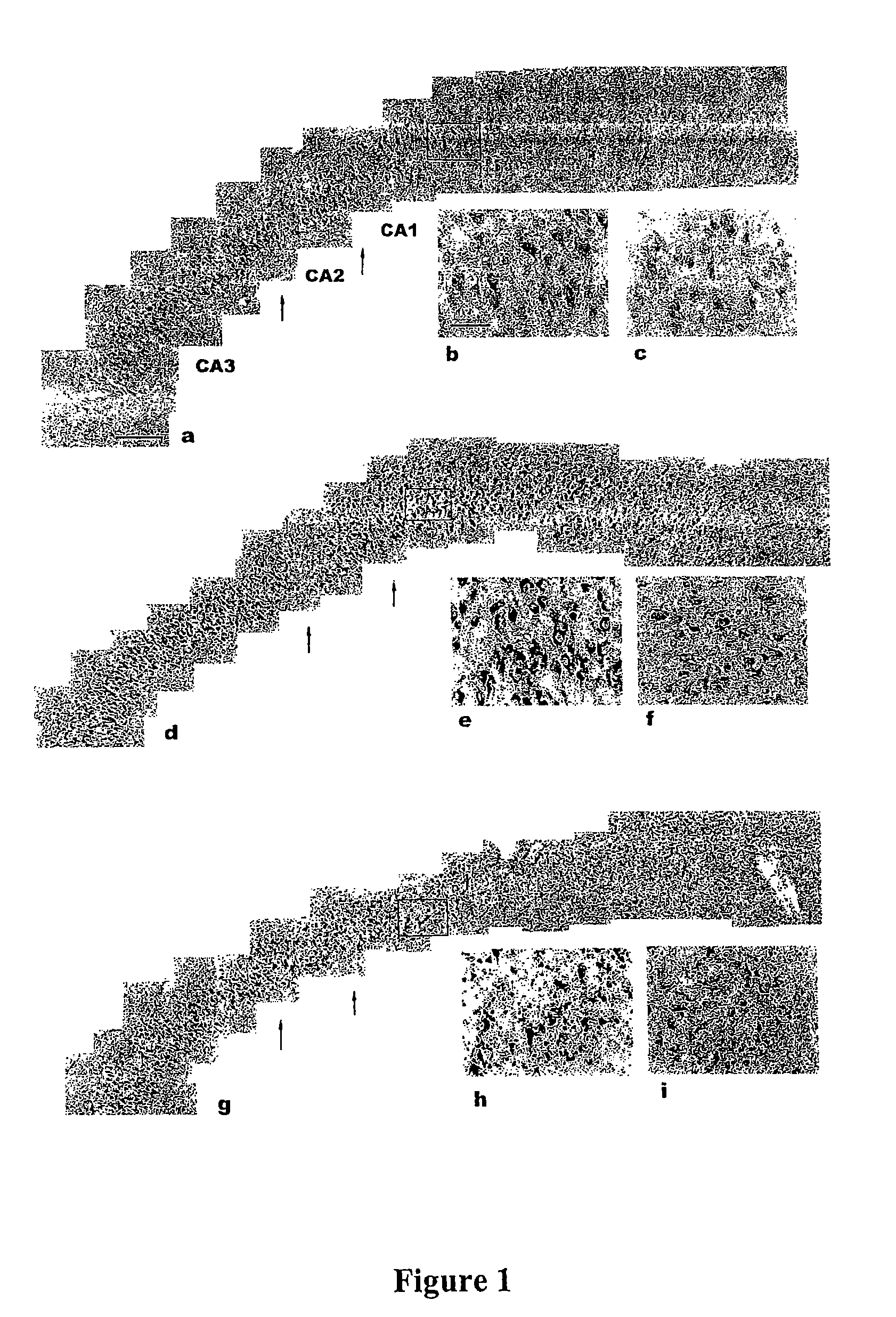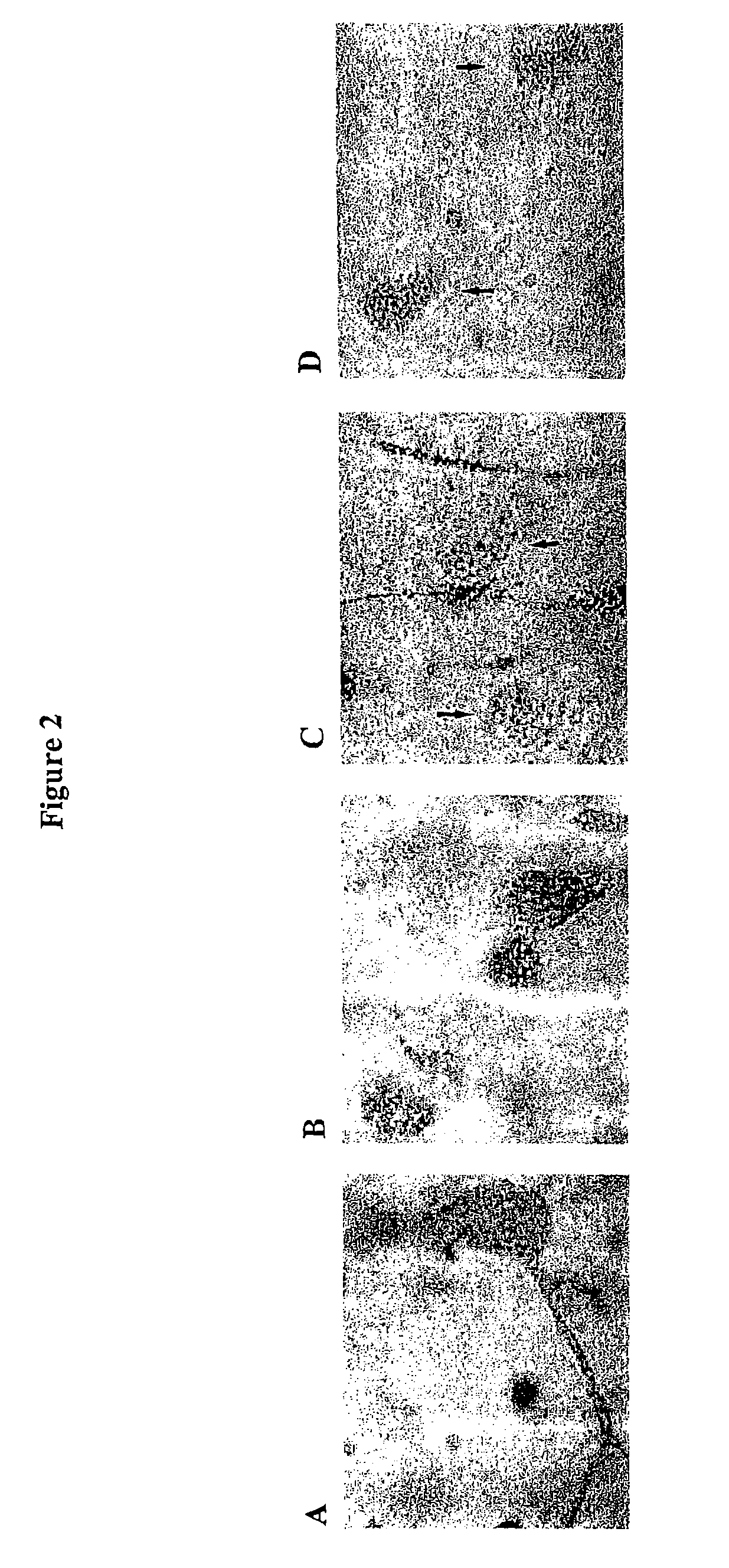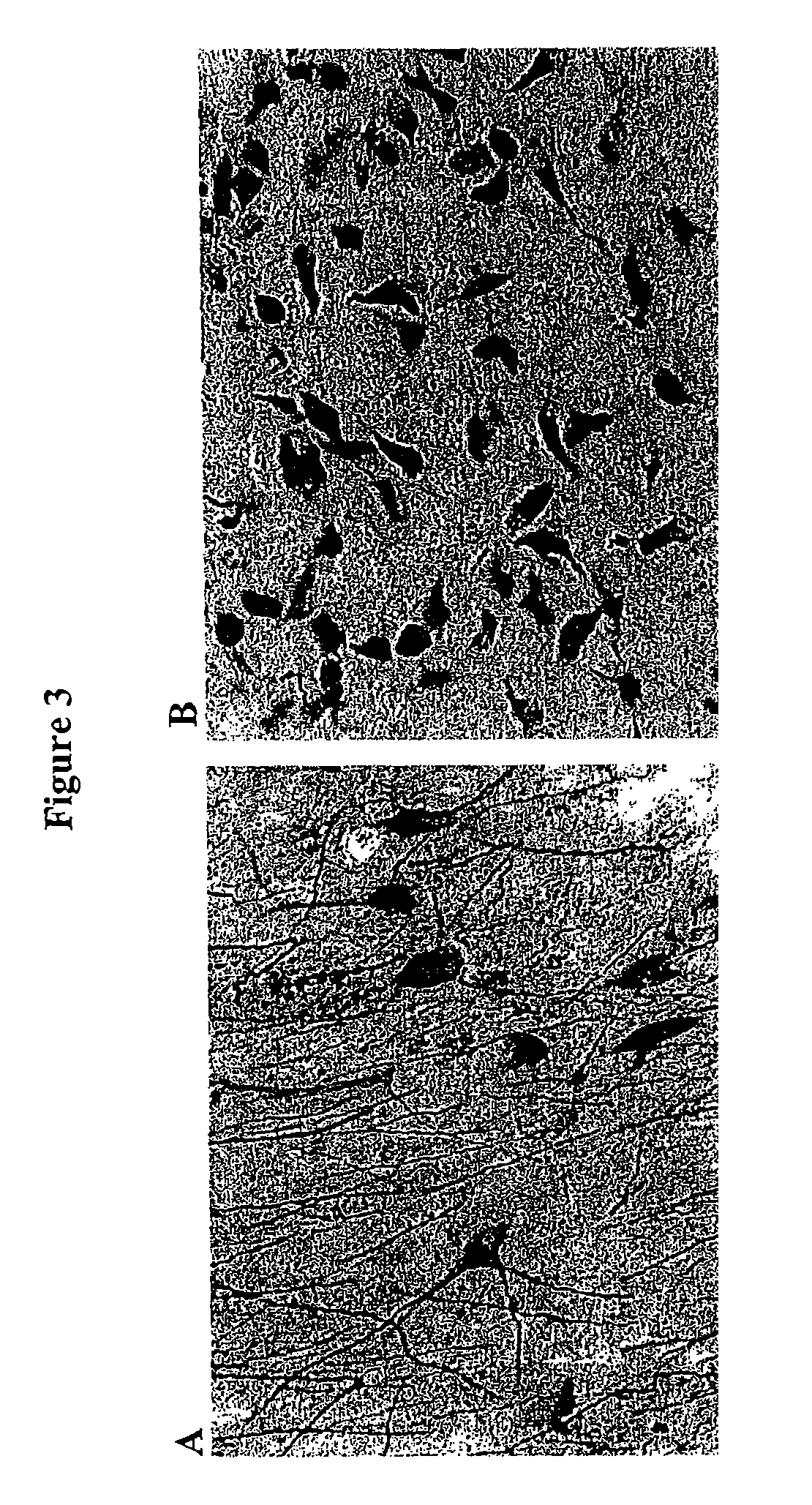Methods for identifying substances for the treatment of Alzheimer's disease
a technology for alzheimer's disease and substances, applied in the field of alzheimer's disease substances for the treatment of alzheimer's disease, can solve the problems of significant irreversible neuronal damage, the only known positive and negative testing and demonstrating method of ad in a patient can only be achieved, and the present clinical evaluation cannot establish an unequivocal diagnosis of ad
- Summary
- Abstract
- Description
- Claims
- Application Information
AI Technical Summary
Benefits of technology
Problems solved by technology
Method used
Image
Examples
example 1
Isolation of a Sema3A Signaling Complex in Hippocampal Neurons During Alzheimer's Disease
Methods
[0167]Immunoaffinity purification of a multiprotein complex. Hippocampal fields were isolated from brain of patients with overt AD (CDR3-5) at autopsy, and frozen. Samples from 6 cases were pulverized in liquid nitrogen and dissolved in buffer A (50 mM HEPES [pH 7.4]; 50 mM NaCl; 10 mM EDTA; 0.5% Triton X-100) supplemented with 100 μg / ml leupeptin, 10 μg / ml bacitracin, 100 μg / ml aprotinin, 100 μg / ml bis-benzamide, 1 mM Na3VO4, and 10 mM—glycerophosphate. Dissolved tissue was extracted by gentle shaking for 1 hour at 4° C., then clarified by centrifugation (30,000×g). Centrifuge step was repeated and the supernatant was recovered.
[0168]A rabbit polyclonal antibody was generated against the phosphorylated peptide PP172 (IYSYQWMALT*PVVKC-SEQ ID NO: 1; asterisk indicates phosphorylated residue) according to methods well known in the art. Non-phosphospecific antibodies were depleted by column ...
example 2
Detection of Sema 3A by Immunocytochemistry on AD Brain Sections
Methods
[0185]Isolation and preparation of samples. AD and age matched control cases were derived from the Mount Sinai Alzheimer's Disease Research Center (ADRC) Brain Bank. All cases have been characterized for cognitive status by a clinical dementia rating (CDR) at a maximum time interval of one year prior to death. The clinical testing results in a clinical dementia rating score for each individual. This score ranges from CDR0: cognitively normal; CDR0.5 questionable; CDR1, mild; CDR2, moderate; CDR3, severe; CDR4, profound; CDR5, terminal. Ten CDR0 cases: mean age at death 77.9±10.7 yr (s.d.), post mortem interval (pmi): 289.4±103.4 min; 5 CDR0.5 cases, mean age 80.6±10.1 yr, pmi 869.4±1310 min (1 case pmi 3485 min); 19 CDR 1-3 cases, mean age 87.9±8.84 yr, pmi 421.8±406.2 min; 15 CDR 5 cases, mean age 83±11.8 yr, pmi 336.9±178.7 min.
[0186]The brains of individuals participating in the ADRC are removed at minimal pos...
example 3
Detection of Sema3A by Immunocytochemistry on PD Brain Sections and Evaluation of Intracellular Effectors of Sema3A Signaling in PD
[0203]Analytical approach. Melanized neurons and single and double-labeled neurons are counted and expressed as total numbers, and percentages of melanized neurons for each case. tissue sections for Sema3A and Map1B, Sema3A and p38, and Sema3A and -synuclein will be double-labeled. The hypothesis is that Sema3A signaling is the event that initiates the neurodegenerative cascade, therefore, the most informative procedure is to co-localize Sema3A with the putative downstream effectors to determine the relative expression of phospho-MAP1B, phospho-p38 and α-synuclein in association with Sema3A. Although the proposed sample size is relatively small it is anticipated that as disease progresses, as quantified by increasing neuronal loss, there will be a greater recruitment of the downstream markers, phospho-MAP1B and phospho-p38 and α-synuclein positive inclus...
PUM
 Login to View More
Login to View More Abstract
Description
Claims
Application Information
 Login to View More
Login to View More - R&D
- Intellectual Property
- Life Sciences
- Materials
- Tech Scout
- Unparalleled Data Quality
- Higher Quality Content
- 60% Fewer Hallucinations
Browse by: Latest US Patents, China's latest patents, Technical Efficacy Thesaurus, Application Domain, Technology Topic, Popular Technical Reports.
© 2025 PatSnap. All rights reserved.Legal|Privacy policy|Modern Slavery Act Transparency Statement|Sitemap|About US| Contact US: help@patsnap.com



